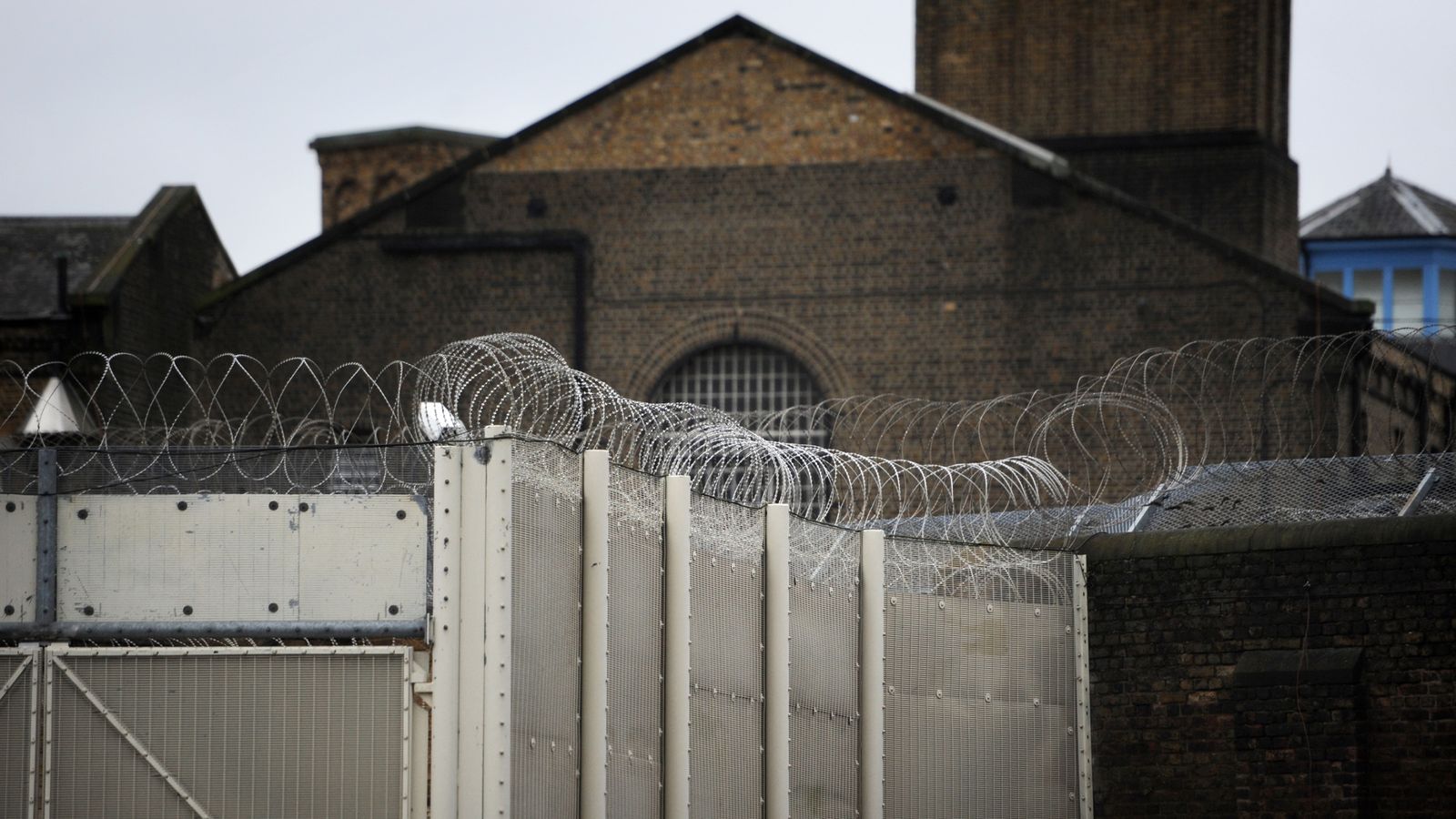The escape of a terror suspect from Wandsworth Prison has triggered a nationwide manhunt.
Daniel Abed Khalife was awaiting trial at the south London jail on charges including preparing a bomb hoax and sharing information useful for terrorism.
The 21-year-old former soldier escaped on Wednesday morning during a shift in the prison kitchen, allegedly clinging to the underside of a food delivery van.
Read more: Fears grow as security stepped up – manhunt latest
Following its last inspection in June 2022, HMP Wandsworth was described as overcrowded and understaffed with increasing levels of violence. Here Sky News takes a closer look at what life is like for inmates and staff there.
One of UK’s most overcrowded
HMP Wandsworth is a Category B men’s prison in southwest London, built in 1851.
The notorious prison breakouts of IRA men, a Soviet spy and one of the Great Train Robbers
Escape of terror suspect Daniel Khalife piles further pressure on already embattled Rishi Sunak
Hunt for escaped prisoner Daniel Abed Khalife: Why wasn’t terror suspect banged up in modern Belmarsh?
It has an official capacity of around 1,600 across five wings, but inspections have consistently found it to be overcrowded with between 60% to 80% more inmates than it was designed for.
The most recent report by His Majesty’s Chief Inspector of Prisons (HMCIP) said it “remains one of the most overcrowded prisons in the country with most prisoners sharing a cell built for one”.
National chairman of the Prison Officers’ Association (POA) Mark Fairhurst told Sky News that the last time he visited Wandsworth there were only 69 prison officers on duty for more than 1,600 inmates.
Category B means Wandsworth takes prisoners straight from local courts – who are either awaiting trial or have been sentenced – and ones that are long-term or high-security.
There is a Category C resettlement unit within Wandsworth where less violent inmates can work and study before they are released.
As well as bathroom and canteen facilities there is also a visiting hall, gym, sports hall, library, faith room, classrooms and workshops.
Prisoners have phones in their cells – although they cannot receive incoming calls.
Those with privileges are offered learning opportunities in barbering, catering, bike repair, gardening, construction and radio production.
According to the website prisoners also have the chance to join a choir, yoga and mindfulness classes.
Read more:
Calls for independent inquiry into escape
Why wasn’t he banged up in Belmarsh?
‘Dirty, graffiti covered cells with no windows’
The latest inspection of the prison was carried out in June 2022.
It found living conditions for prisoners to be “very poor”. They were often housed in “dirty, graffiti covered cells, some of which had no windows”.
Inspectors also described “cleaning cupboards being in disarray” and “large amounts of rubbish in exercise yards attracting vermin”. Piles of litter were also seen “on wings” and “thrown from cell windows”.
Prisoners on one wing had to shower in “squalid conditions”, with many inmates not having access to showers on a Friday.
The prison hospital “did not meet infection prevention and control standards”, but half of the mental health unit cells were in the process of being refurbished.
Prisoners spent too much time in their cells, with more than half of the population unemployed, which meant they were locked up for 22 hours a day.
By contrast there weren’t enough work opportunities due to overcrowding and education attendance was poor.
‘Increased levels of violence’
Since the previous inspection in 2021, levels of violence had increased.
According to the inspector staff “lacked confidence in challenging poor behaviour on wings”.
But they found that victims and perpetrators of crime within the prison were generally supported and leaders were implementing plans to improve safety.
While previously levels of force used by staff was described as concerning, there had been “substantial improvements” by mid-2022.
More prison officers were using their body-warn video cameras, but there still weren’t enough cameras to cover all areas of the prison.
Previously the facilities for foreign nationals were poor, with immigrant detainees spending too long at Wandsworth. But this had “improved significantly” by the time of the last inspection – with immigration officers working full-time with the support of two charities.
Staff shortages ‘very high’
As a result of overcrowding, poor recruitment and retention, there were not enough members of staff per prisoner at Wandsworth at the time of the last inspection.
The inspector described “very high rates of non-effective staff”. The prison governor had left since the previous inspection and an interim one was in place.
In a statement after Khalife’s escape, general secretary of the Prison Officers’ Association (POA) Steve Gillan said: “Wandsworth is a typical example of what life is like for serving prison officers operating in a stressful and violent workplace with inadequate staff levels caring for over 1,600 prisoners at that establishment”.
His colleague Mr Fairhurst added that “chronic staffing shortages” and “lack of adequate training” has resulted in an “overcrowded” and “underresourced” jail.
Notable inmates
As a remand prison in London, Wandsworth has been home to some well-known and infamous inmates over the years.
These include:
Journalist and documentary maker Chris Atkins documented his time at Wandsworth in his book and podcast A Bit of A Stretch.
He served time for fraud and described overcrowded, violent and squalid conditions.






